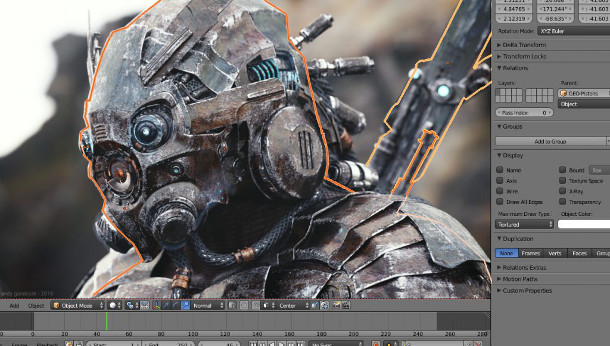Sneak peek: Blender’s new Eevee real-time render engine

A development reference image mocked up using Blender’s existing Cycles renderer, showing the kind of visual quality the dev team hopes to achieve in the software’s upcoming real-time Eevee render engine.
The Blender Foundation has posted the first details of the feature set for Eeevee, the new real-time not-quite-PBR render engine due to roll out in Blender 2.8.
A real-time PBR render engine – kind of
First announced last year, Eevee is effectively a PBR renderer in all but name.
According to the latest post on the Blender development blog, it will “follow the (game) industry trend” for real-time physically based rendering, “supporting high-end graphics coupled with a responsive … viewport”.
However, its name – it stands for ‘Extra Easy Virtual Environment Engine’, as well as a type of Pokémon – has been chosen to “avoid the confusing and too-much-hyped [term] PBR”.
While meant to be a “nice photorealistic engine”, Eevee isn’t necessarily intended to be as advanced as implementations of PBR in game engines, with the blog noting that the goal is “not feature parity with UE4”.
Unreal Engine-style ubershaders for common material types
In practice, that should mean that all of Blender’s “realistic” lights – that is, everything but the Hemi Lamp – are supported, using Blender’s existing shadow buffer system for real-time renders.
The work will implement UE4-style ubershaders for common material types, but with some advanced shaders – notably, SSS and volumetrics, and a clear-coat shader for car paint – missing in the initial release.
As a fallback when working with legacy scenes, materials set up for Blender’s existing offline Cycles render engine should work in Eevee by default, even if they look “slightly different”.
Image-based lighting via in-scene on-demand light probes
For image-based lighting, Eevee “will support pre-rendered HDRI followed by in-scene [light] probes”.
To ensure that something is displayed in the viewport while light probes are being calculated when a scene is first loaded, the output of the diffuse shader will be cached in the .blend file using spherical harmonics.
According to the blog post, cube maps – more accurate, but also more computationally intensive than spherical harmonics – will only be used for baked specular highlights.
Support for key post effects
The initial implementation of Eevee will also support a range of key post-processing effects, like motion blur, bloom, depth of field, tonemapping, and Ground Truth Ambient Occlusion.
Temporal anti-aliasing and screen-space reflections are due to follow in subsequent releases.
Availability
Eevee is due to form part of the upcoming Blender 2.8 release cycle. Core features are due to be implented by Siggraph 2017 in August, with “a more polished usable version” for the Blender Conference in October.
Read more about the new features due in the Eevee renderer on the Blender development blog
